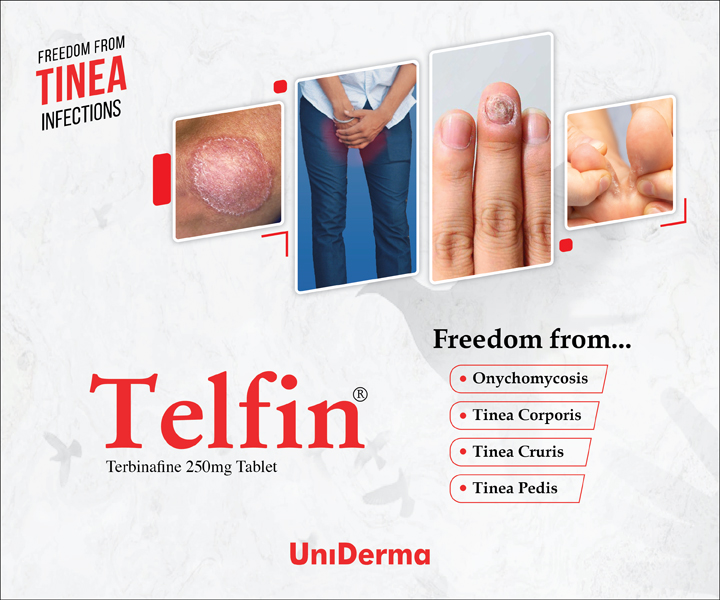
Oral Medications to Treat Toenail Fungal Infection
JAMA: The Journal of the American Medical Association
The authors investigated different
oral antifungal medications used to treat toenail fungal infections.
TAKE-HOME MESSAGE
Compared
with placebo, high-quality evidence supports better clinical (ie, normal
appearance of the toenail) and mycological (negative culture, microscopy, or
both) results with both terbinafine and azole-based treatments.
However, on direct comparison, azoles did not perform
as well as terbinafine for positive cure rates. Terbinafine 250 mg orally once
daily for 3 to 4 months is preferred over the azoles.
Terbinafine
works up to 70% of the time in selected patients who still have growing nails
and mild to moderate involvement. There are also fewer concerns for drug
interactions and hepatotoxicity with terbinafine.
Itraconazole
or fluconazole including pulse therapy regimens are preferred when a yeast or
mold is identified as the cause of the onychomycosis, but the treatment failure
rate (24%–69%) makes this a second-line drug.
Ketoconazole
should be avoided in view of cases of fatal hepatotoxicity since safer
alternatives are available.
Griseofulvin is simply not as effective and would need to be used for a prolonged time until the nail completely grows out.
Read In Details
Recommended For You View All
Tags Cloud
Categories
- Coronavirus Clinical Updates 68
- Coronavirus Treatment Updates 48
- Coronavirus Vaccine Updates 70
- Drug Information 6
- Disease Information 4
- Clinical Updates 12
- Clinical Guidelines 53
- FDA Approvals 13
- Clinical Tools 15
- Digital Innovations 6
- Videos 14
- Resources 0
- Covid-19 2
- clinical-spotlight 0
- Cardiovascular disorders 61
- Dental disorders 8
- Dermatologic disorders 81
- ENT disorders 7
- Endocrine disorders 78
- EYE disorders 7
- Gastrointestinal & Hepatic disorders 97
- Genitourinary disorders 11
- Gynecology & Obstetrics disorders 67
- Hematology disorders 6
- Neurologic disorders 33
- Orthopedic disorders 14
- Pediatric disorders 8
- Psychiatric disorders 9
- Respiratory disorders 25
- Surgical disorders 4
- Other disorders 0
- Allergy & Immune System drugs 46
- Anesthetics & Neuromuscular blocking drugs 0
- Drugs for bacterial infections (Anti-bacterial) 26
- Drugs for fungal infections (Anti-fungal) 46
- Drugs for helminthiasis (Anti-helminthic) 0
- Drugs for protozoal infections (Anti-protozoal) 4
- Drugs for viral infections (Anti-viral) 11
- Carcinochemotherapeutic & Cytotoxic immunosuppressants drugs 1
- Anti-coagulants drugs 4
- Antiplatelet & anti-fibrinolytic/haemostatic drugs 6
- Drugs for arrhythmias (Anti-arrhythmic) 0
- Drugs for congestive heart failure (CHF) 0
- Drugs for hypertension (Anti-hypertensive) 28
- Drugs for lipid regulation 12
- Drugs for peripheral and cerebral vasodilatation & neurosensory oxygenator 0
- Analgesics & Anti-pyretic drugs 2
- Drugs for Acute Migraine Attack 0
- Drugs for depression & anxiety 8
- Drugs for epilepsy/convulsion 9
- Drugs for nausea vomiting & vertigo 0
- Drugs for neurodegenerative diseases 0
- Drugs for other CNS diseases 0
- Drugs for psychosis (Anti-psychotic) 1
- Drugs for Sedation & Hypnosis 0
- Prophylactics of Migraine 1
- Cerebrovascular System Drugs 0
- Analgesics drugs (Topical) 0
- Anti-eczema & Anti-psoriasis preparations 0
- Anti-septics & Skin disinfectants 0
- Dressing products 0
- Drugs for Acne & Rosacea 0
- Drugs for Dry Skin 0
- Drugs for hyperpigmentation 0
- Drugs for Ichthyosis & Scaly skin 0
- Drugs for Vitiligo 1
- Preparations for Warts & Calluses 0
- Protection of skin from solar radiation 0
- Shampoos & Other scalp preparations / anti-dandruff preparations 1
- Topical Anti-infective Drugs 0
- Topical Antihistamines Anti-pruritic & Local anesthetics 0
- Topical corticosteroids & combined preparations 0
- Drugs for Anemia & other blood disorders 2
- Drugs for Bone Formation & Bone Disorders 2
- Drugs for Vitamin Mineral & Nutritional deficiency disorders 18
- E.N.T preparations 0
- Anti-diabetic (Oral hypoglycemic drugs) 14
- Anti-diabetic (Parenteral hypoglycemic drugs) 6
- Corticosteroid hormones 1
- Drugs for Diabetic Peripheral Neuropathy 0
- Gonadal hormones (sex hormones) and their antagonists 12
- Hypothalamic & Pituitary hormones & Anti oestrogens 0
- Thyroid hormones & Anti Thyroid drugs 11
- Eye preparations 3
- Drug affecting intestinal secretions 0
- Drugs for chronic inflammatory disease (Anti-inflammatory) 6
- Drugs for Constipation 1
- Drugs for Diarrhea 6
- Drugs for Dyspepsia 5
- Drugs for Emetics 0
- Drugs for Esophagitis 5
- Drugs for GERD 47
- Drugs for Peptic ulcer 16
- Drugs for Zollinger-Ellison Syndrome 0
- Local preparation for anal and rectal disorder 0
- Genito-urinary system drugs 4
- Miscellaneous Drugs 0
- Musculo-Skeletal System drugs 10
- Respiratory system drugs 11
- Infectious diseases 50
- Derma AI Tool 9





Comments
You must login to write comment